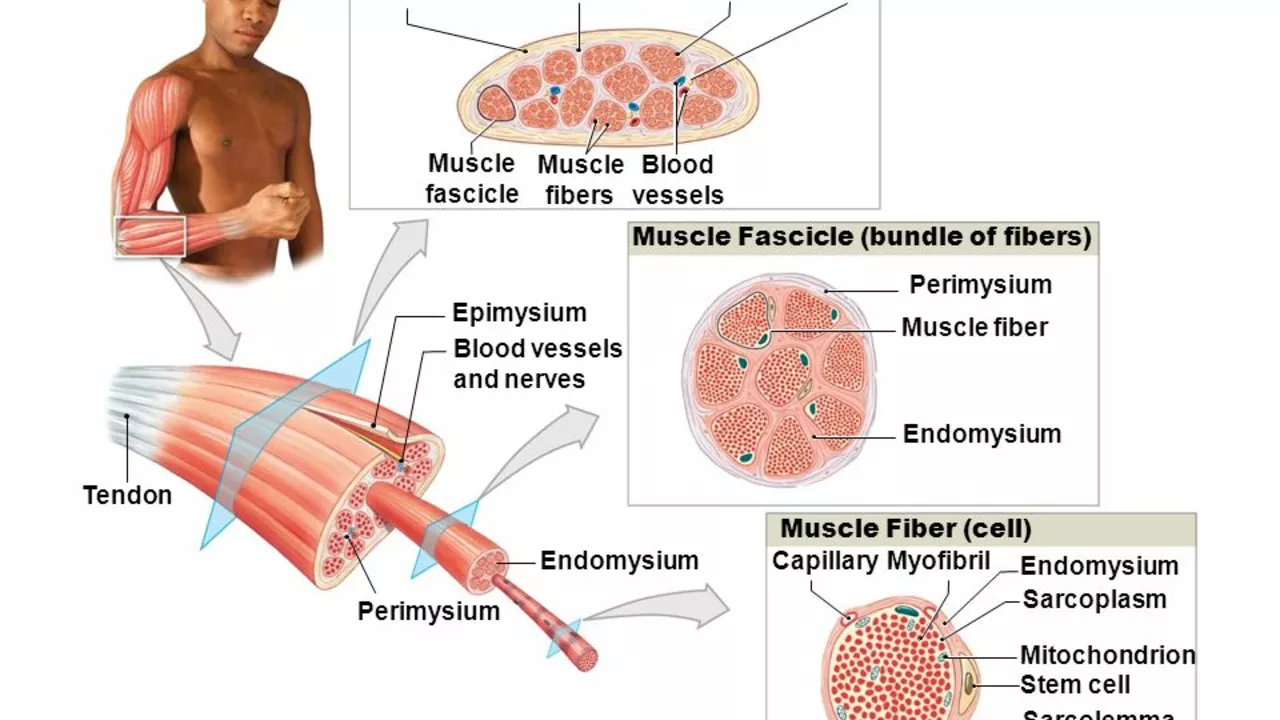Sore muscles after a workout are normal. Persistent weakness, cramping, or sudden severe pain are not. Those signs often point to a skeletal muscle condition — a problem that starts in the muscle tissue itself rather than nerves or joints. Knowing the difference saves time and prevents harm.
Common complaints you’ll hear: ongoing muscle pain (myalgia), unexplained weakness, stiffness that limits movement, muscle swelling, or dark urine after exercise. Causes range from overuse and metabolic issues to infections, autoimmune attacks, inherited disorders, and the rare but dangerous rhabdomyolysis.
Myositis — inflammation of muscles, often from autoimmune disease or infection; symptoms include fatigue, weakness getting worse over weeks, and trouble climbing stairs or lifting objects.
Muscular dystrophies — genetic conditions that slowly weaken muscles over years; diagnosis usually involves family history, genetic testing, and specialist care.
Statin-related or drug-induced myopathy — some medications can cause muscle pain or weakness; stopping or switching drugs under a doctor’s guidance usually helps.
Rhabdomyolysis — sudden muscle breakdown causing very dark urine, severe muscle pain, and risk to the kidneys. This is urgent and needs emergency care.
Your doctor will start with a clear history and a focused exam. Blood tests check enzymes like creatine kinase (CK) and look for signs of inflammation or kidney stress. Urine tests spot muscle breakdown byproducts. Imaging like MRI can localize inflammation. Electromyography (EMG) and nerve studies differentiate muscle problems from nerve problems. Sometimes a muscle biopsy or genetic test is needed for a precise diagnosis.
Treatment depends on the cause. For overuse and mild inflammation, rest, heat/ice, and a short course of anti-inflammatory meds may do the trick. Autoimmune myositis often needs corticosteroids and other immune-suppressing drugs, plus physical therapy to rebuild strength. Genetic conditions focus on supportive care: mobility aids, respiratory checks, and specialist follow-up. Drug-induced cases often improve after stopping the culprit medication under medical advice.
Physical therapy plays a big role in nearly every long-term plan. A tailored exercise program helps maintain range of motion and rebuild safe strength without causing more damage. Hydration and gradual rebuilding after intense workouts reduce the risk of rhabdomyolysis.
Watch for these red flags: sudden severe muscle pain, swelling, very dark urine, fainting, or rapidly worsening weakness. Those need immediate medical attention. If symptoms are mild but don’t improve in a week or two, see your doctor for tests rather than waiting it out.
If you want to learn more, read our expert articles on related meds, safety tips, and practical rehab strategies. Skeletal muscle problems can be managed well when you spot warning signs early and get the right care.

In my latest research, I've been looking into how aging affects our skeletal muscle conditions. It's apparent that as we age, our muscles gradually lose strength and mass, which is a process known as sarcopenia. This not only leads to greater frailty, but it also contributes to imbalances and falls, increasing the risk of fractures. Additionally, the body's ability to repair muscles decreases with age, making recovery from injury slower. It's a stark reminder of the importance of maintaining muscle health and strength as we grow older.